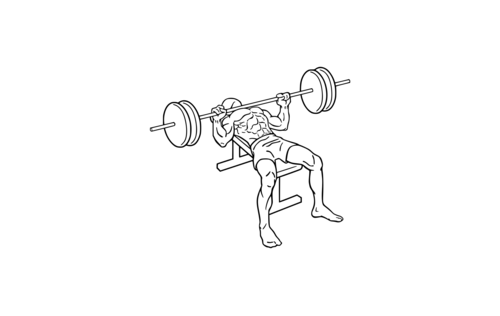I was on my 5th book and had just ordered a couple more.
By looking through my dad’s library I found a few more, as well.
I laid out the entire selection in front of me, trying to figure out which one I should read first.
“Schwarzenegger’s manual looks good.”
It was called “Arnold’s Bodybuilding for Men”. The cover featured a buck-toothed young Arnold in a pair of red short-shorts and matching red tank-top. It was hilariously 80s.
Over the next few days I read through a bunch of the sections and looked at the diagrams for how to do different exercises.
There was the shoulder press. The bench press. The cable row. And 100 others.
Awesome.
Then I went on to the next book. I think it was called “The Hardgainer Solution”, and it recommended a weightlifting program that was built around 5 key lifts; the squat, the deadlift, the bench press, and a couple others I can’t remember.
After reading through yet another book, I was ready to give this “lifting thing” a shot.
My dad had an old, beaten up weightlifting bench in the backyard. It was in terrible shape. The cushion was worn through where the head is supposed to rest, exposing the wooden foundation.
And then there were the weights. They were scattered around the bench, and each contained a nice layer of rust.
I picked up a couple of 10 pound plates and put them on the long barbell that floated above the bench. Then I added a couple of five pounders. I think there were about 70 pounds on the bar in total.
I laid down, situated my head under the bar, and lifted it up out of its holder.
Rep 1. Rep 2. Rep 3…
It kind of hurt.
Was this “good” hurt or “bad” hurt?
Was this the feeling of getting stronger? Or was I just injuring myself?
After about 10 reps I put the thing back and opened up one of my handy-dandy manuals.
What did it say about how it’s supposed to feel?
I jetted around a bit, but couldn’t really find a good answer. There were plenty of warnings scattered throughout the book, “DO NOT lift if you’re in pain. It is easy to injure yourself blah blah blah”… all put in there as “C.Y.A” legal protection.
But I was too young and naïve to realize that at the time.
I felt a weird discomfort or soreness in my upper back from another round of presses.
“Is this normal?”
I consulted the book again and, once more, didn’t find any good answers.
So I threw in the towel for the night. I “lifted” maybe one or two more times over the next few weeks, and then discontinued the practice after similar doubts kept cropping up.
My weightlifting adventure continued like that for a number of years. I would research and overthink it, then quit soon after wading into the complicated world of actually doing it.
I was looking for certainty and I was attempting to get it through rigorous study.
This, however, prevented me from having any muscle-building success for about a decade.
Why?
Because the real world is messy, and what you read in books and papers is a stripped down and simplified version of reality.
Yes, academic study is a crucial part of success in any endeavor—you have to arm yourself with the right information in order to do the right things—but it’s easy to go too far.
At the end of the day, you just have to get out into the world and experiment.
I got too stuck in the world of diagrams, data, and book knowledge. It wasn’t until I just started going to the gym and doing what felt good (and was fun) that I actually started to have some success.
This is a lesson for every part of life, but it’s particularly relevant for those looking to apply the behavioral sciences to problems at work (or at home).
Read. Study. Then just DO IT. Try things. Don’t get stuck in analysis paralysis.
Until tomorrow,
Jason





